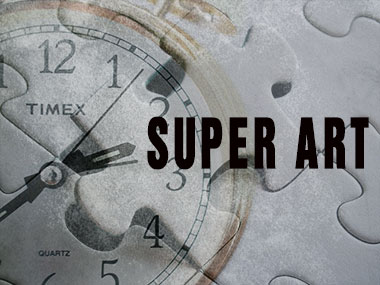Super Art and Write-Off Measures for SMSFs

Aboriginal Art Directory | 20.10.15
Author: Michael Fox
Unless new Arts Minister in Canberra, Mitch Fifield, can be tempted to cross the Treasury/Brandis line that art is bad for super funds, the months leading up June 30th 2016 are going to see panic selling of art - including Aboriginal art. Specialist accountant, Michael Fox, offers some thoughts on tackling this matter in a more effective way. And this is certainly a more predictable way to go about this business than attempting to buy your own work back at auction.
The depreciation provisions in the recently legislated Small Business Measures offers some super funds a tax-effective strategy to transfer their artwork investments to their members prior to a looming compliance deadline.
From 1 July 2016, all artworks must comply with new display, storage, insurance and related-party requirement as the five year grandfathering clause in Section 62A of the SIS Act will expire. Failure to comply with Section 62A will be costly for super funds and could jeopardise their tax-compliant status. This is particularly the case for artworks owned by super funds and displayed by business trustees, regardless of whether lease payments are being made by the business, as these types of arrangements will be unlawful.
I estimate the annual holding costs of the new requirements – particularly storage - as between 2% and 5% of the value of the artwork investments. In relation to whether artworks should continue to be held after 30 June, a good starting point is for super funds to work out their current market value. Then the insurance and storage costs may be evaluated by reference to their worth. Valuation requirements are discussed in more detail later in this article.
If trustees decide that the additional compliance costs make their artwork investments uneconomic, it is possible to transfer ownership from the fund to either the trustee or members by obtaining a market valuation for that purpose. If the trustee or members is a small business (defined by the Small Business Measures as an entity with an annual turnover of less than $2 million), they will also obtain a generous tax deduction if the transfer occurs before the end of the 2016/17 financial year.
Artworks are classified as investments under the SIS Act but also as depreciating assets under Division 40 of the Income Tax Assessment Act. Normally artworks, particularly expensive ones, are subject to a very low rate of depreciation due to the normal useful life being up to 100 years as determined by the Australian Taxation Office (ATO). The former accelerated depreciation measure did not apply to artworks because the useful life threshold was set at 25 years but this year's measures are completely different.
An immediate write-off of up to $20,000 is available to an eligible small business purchasing a depreciating asset. There is no bar to either second-hand goods or whether the parties involved in the transaction are related to each other. There is no limit to the number of assets costing less than $20,000 that a small business may claim a tax deduction for. Provided the small business can show that they are the economic owner (or holder) of the artworks, four main criteria must be satisfied to be eligible for the immediate write-off:
1. they must be tangible;
2. they must be capable of being moved;
3. artworks have to be purchased with the dominant purpose of display in a business premise; and
4. they must not be trading stock.
Where appropriate, a small business trustee or member of the super fund could buy back all of the artworks held in its super fund and claim a 100% tax write-off for each artwork costing less than $20,000. If this happened on or before 30 June 2016, the super fund would also avoid the compliance costs of the new Section 62A requirements.
A valuation will need to be prepared by a suitably qualified valuer in order for the trustee or member to purchase artworks back from the super fund. The valuation must comply with the guidelines set out by the ATO in Market valuation for tax purposes (released 23 June 2014), which closely follows the authoritative case of Spencer v Commonwealth (1907) in relation to this issue. Helpfully, the ATO has just released a valuation instruction form, which I highly recommend the client and the valuer complete and attach to the valuation for the purposes of transferring artworks from the super fund to the trustee or member.
For the super fund, the transfer will cause either a capital gain or a capital loss on the disposal of the artwork. If a capital loss is created, it is not allowable to offset this loss against capital gains created through the disposal of equities and property.
For the trustee or members, the immediate write-off of an artwork costing less than $20,000 and transferred from the super fund, will reduce its cost base to nil. As the artwork is a depreciating asset, the 50% capital gain discount for assets held for more than 12 months will not be available. A subsequent sale of the artwork will create a taxable gain on the net proceeds and, in rare cases, will also create a liability for resale royalty to the maker of the artwork.
Michael Fox is a Melbourne-based tax agent and valuer who specialises in art market matters. He led the Save Super Art campaign in 2010 to prevent artworks from being prohibited as suitable investments for self-managed superannuation funds.
URL: http://www.foxmichael.com.au/
Share this:
»  del.icio.us
»
del.icio.us
»  Digg it
»
Digg it
»  reddit
»
reddit
»  Google
»
Google
»  StumbleUpon
»
StumbleUpon
»  Technorati
»
Technorati
»  Facebook
Facebook
Contact Details

Michael Fox runs a accountancy firm specialising in the art market.
Further Research
News Tags: ATO | Michael Fox | SMSFs | Specialist Art Market Accountant | Superannuation | Tax Strategies for Art
News Archive
- 11.10.17 | RETURN OF MUNGO MAN
- 10.10.17 | TARNANTHI 2017
- 11.08.17 | Natsiaas 2017
- 08.08.17 | ABORIGINAL ART ECONOMICS
- 02.08.17 | SCHOLL'S NEXT MOVE
- 20.07.17 | APY ART DOMINATES THE WYNNE
- 17.07.17 | Anangu Artist Wins $100,000 Prize
- 14.07.17 | The End of AAMU
- 13.07.17 | YOU ARE HERE
- 11.07.17 | ART ACROSS THE COUNTRY
- 11.07.17 | TARNANTHI IN OCTOBER
- 05.07.17 | TJUNGUṈUTJA - from having come together
- 02.07.17 | BENNELONG
- 27.06.17 | JIMMY CHI
- 23.06.17 | Blak Markets at Barangaroo
Advertising

